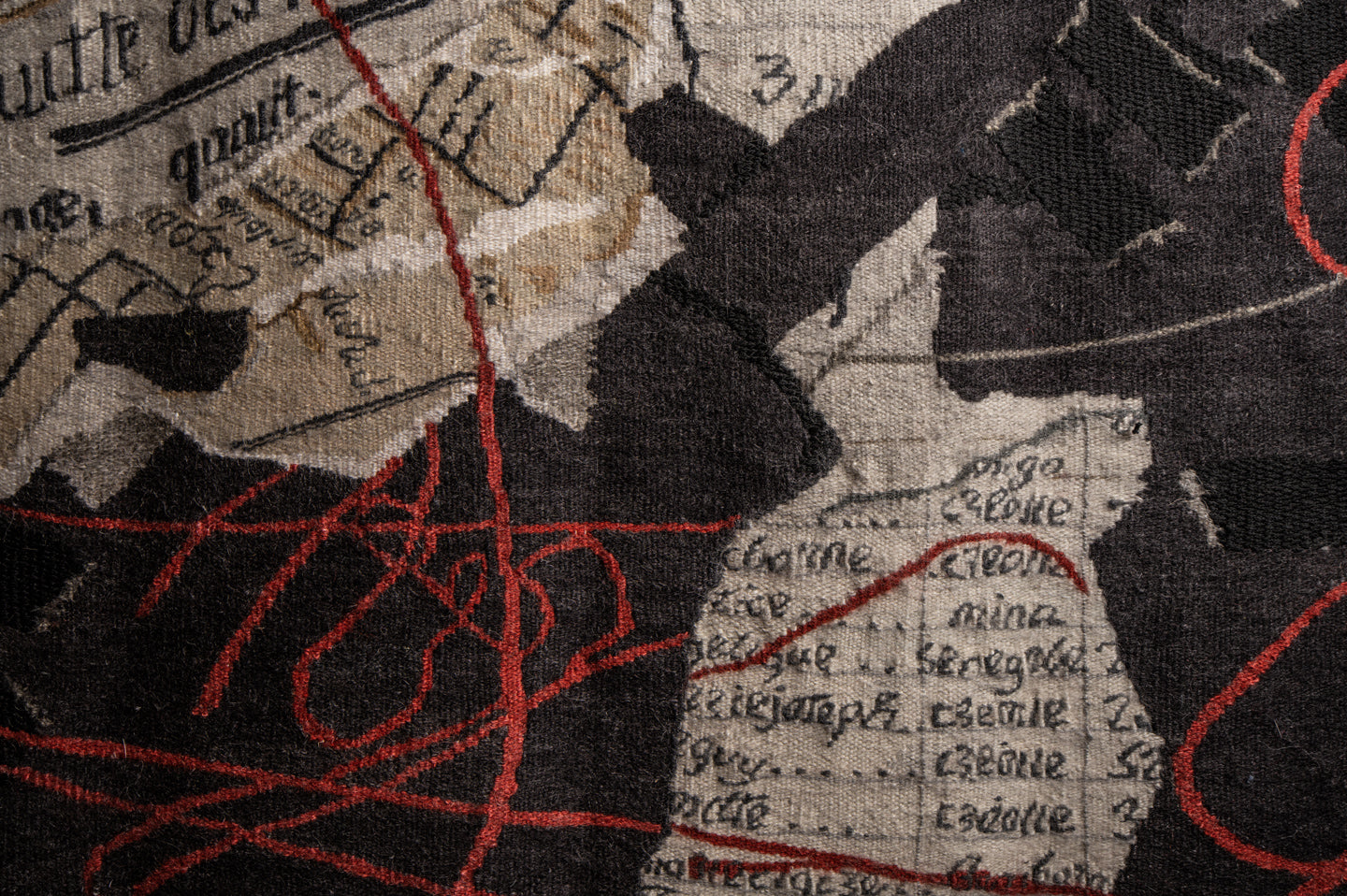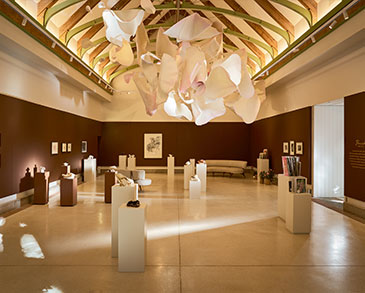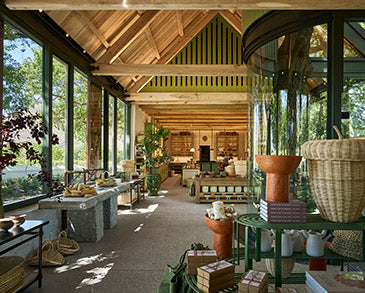
Threads of Synergy presents a selection of tapestries by the South African artists William Kentridge, Sam Nhlengethwa, Cecily Sash and Cecil Skotnes, all woven in the Stephens Tapestry Studio. These large-scale tapestries (some measuring three to four metres each) reveal the very essence of creative collaboration between artists, designers and weavers. Their co-created tapestries are eventually exhibited in galleries and museums worldwide. The exhibition is subsequently based on weaving as an art form – from spinning and dyeing the mohair, redrawing the artwork designs for tapestry and charting the colours, to the weaving process itself, as further explained here.
Tapestries from the Stephens Studio are made primarily of mohair, a tough, luxurious fibre produced by Angora goats. The mohair is sent in its raw state to Piggs Peak in Eswatini where it is carded and made into curls. The finely carded mohair curls are fed into the spinning wheels and spun into long threads of a required thickness, and then dyed to the exact colours chosen for each tapestry.
Back at the Stephens Studio, the artist’s original design is photographed and enlarged. Acetate is then laid over the blown-up image so the shapes can be traced. At this point, parts of the original design are manipulated and adapted so that it can translate successfully onto the amplified medium of tapestry. The colours that have been dyed for the design are then collated onto a chart and each is assigned a number. The corresponding number is then noted onto the traced cartoon.
Following this preparation, the cartoon of the artwork is enlarged to the exact size of the tapestry and placed behind the vertical polycotton strings making up the warp. Teams of up to four highly trained weavers sit at each loom and weave the intricate shapes that translate and magnify the artist’s original design into tapestries. Depending on the size and intricacy of the work, the weaving process can take up to six weeks.
For Marguerite, the combination of a sound artistic vision and meticulous execution produces a successful tapestry, which can only be fully judged when the tapestry is released from the loom and hung for the first time – becoming an artwork that holds the impact of the touch of all who participated in the process of its making.
Learn how to make your own
La Motte's Threads of Synergy Tapestry Exhibition extends to walkthroughs and weaving workshops, entitled Create your own tapestry with Andie Reeves. These weekend morning workshops celebrates the arts at La Motte and starts with a glass of La Motte Méthode Cap Classique and a walkthrough of Threads of Synergy in the La Motte Museum. A Winelands-inspired tapestry weaving workshop follows in the estate’s Historic Cellar. In this introductory workshop, textile artist, Andie Reeves, introduces the basics of hand-weaving and each attendee will receive a needle, wool and supplies to complete their own beautiful woven wall hanging and laser cut loom. The workshop concludes with an optional lunch under the oak trees.
Workshop dates
Sunday 24 October 10:00-14:00 (Book here)
Saturday 27 November 10:00-14:00 (Book here)
Saturday 12 February 10:00-14:00 (Book here)
Saturday 9 April 10:00-14:00 (Book here)
Workshop price: R500 (excludes lunch). Limited availability.
Reservation is essential: museum@la-motte.co.za












